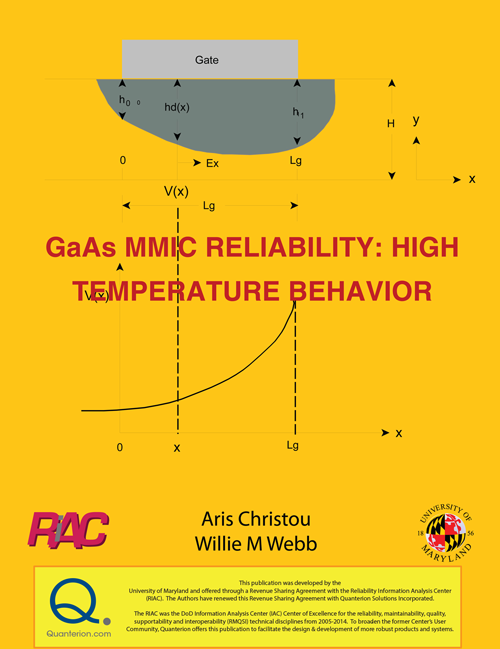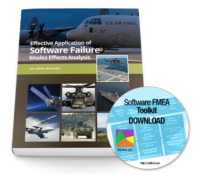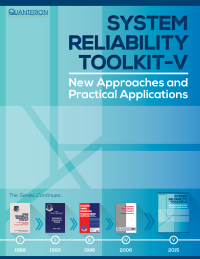| 1 Introduction to the High Temperature Reliability Issues of MMICs |
1 |
| 1.1 Background |
1 |
| 1.2 State-Of-The-Art of MMIC High Temperature Behavior |
3 |
| 1.3 Chapter Outline |
5 |
| References |
9 |
| 2 MMICs and Monte Carlo Technique |
13 |
| 2.1 Monolithic Microwave Integrated Circuits for High Temperatures |
13 |
| 2.1.1 MMIC Status |
13 |
| 2.1.2 MMIC Performance |
14 |
| 2.1.3 MMIC Applications |
15 |
| 2.2 Monte Carlo Techniques for Design and High Temperature Prediction |
16 |
| 2.2.1 Introduction To Monte Carlo Methods |
16 |
| 2.2.2 High Temperature Reliability Simulations by Monte Carlo Techniques |
18 |
| References |
21 |
| 3 MMIC High Temperature Reliability |
25 |
| 3.1 Introduction |
25 |
| 3.2 Mmic High Temperature Reliability Mathematics |
27 |
| 3.3 Investigations of MMIC Reliability |
33 |
| 3.4 Concerns of High Temperature MMIC Reliability |
35 |
| References |
39 |
| 4 High Temperature Modeling and Thermal Characteristics of GaAs MESFETs |
43 |
| 4.1 Introduction |
43 |
| 4.2 State-Of-The-Art for Modeling High Temperature Characteristics |
45 |
| 4.3 Chapter Outline and Objectives |
46 |
| 4.4 Physical Properties of MESFETs at Elevated Temperatures |
46 |
| 4.4.1 Gallium Arsenide |
47 |
| 4.4.2 Energy Gaps and Intrinsic Carrier Densities |
47 |
| 4.5 Carrier Mobilities and Saturation Velocity |
51 |
| 4.6 Modeling of MESFETs |
56 |
| 4.6.1 Introduction |
56 |
| 4.6.2 Principles of MESFET Operation |
57 |
| 4.6.3 Linear Region of MESFET Characteristics |
58 |
| 5.6.4 Saturation Region Model |
59 |
| 4.7 Empirical MESFET Model |
60 |
| 4.8 Temperature Related Properties of GaAs Mesfet |
64 |
| References |
69 |
5 Computer Simulation and Electrical Measurements of The GaAs MESFET
Temperature Dependence |
71 |
| 5.1 Introduction to the Simulation of Temperature Dependence |
71 |
| 5.2 Simulation Results for the MESFET |
73 |
5.2.1 Comparison of MESFET Simulation: Hyperbolic and
Quadratic Model |
73 |
| 5.2.2 Simulation Results of the ZTC Bias Point Of GaAs MESFET |
82 |
| 5.2.3 Temperature Dependent Characteristics of The GaAs MESFET |
94 |
| 5.2.4 Electrical Measurement at Elevated Temperatures |
103 |
5.3 Thermal Measurements of GaAs Devices Using IR Microscopy
Techniques |
107 |
| 5.3.1 Operation Principle of The IR Microscope |
107 |
| 5.3.2 IR Microscopy Measurement Results |
108 |
| 5.4 Finite Element Analysis of Heat Transfer in The GaAs MESFET |
110 |
| 5.4.1 General Mathematical Assumptions and Model |
111 |
| 5.4.2 Simulation Results and Comparison with Measurements |
111 |
| 5.5 Summary and Conclusions |
114 |
6 Temperature Effects of MMIC Heterostructure GaAs Transistors
and Circuits |
119 |
| 6.1 Introduction |
119 |
| 6.2 Physical Properties of AlGaAs/GaAs HFET |
120 |
| 6.2.1 AlGaAs/GaAs HFET Device Structures |
120 |
| 6.2.2 Principles of HFET Operation |
121 |
| 6.2.3 Modulation Doping |
122 |
| 6.3 Aim-Spice HFET Model |
123 |
| 6.3.1 HFET Model for Aim-Spice Input File |
124 |
| 6.3.2 Current-Voltage Model Used by Aim-Spice |
124 |
| 6.4 Current-Voltage Characteristics of AlGaAs/GaAs HFET |
128 |
| 6.4.1 Intrinsic Current-Voltage Characteristics |
128 |
| 6.4.2 Extrinsic Current-Voltage Characteristics |
129 |
| 6.5 Temperature Dependent Characteristics of HFET |
133 |
| 6.5.1 Energy Gap and Intrinsic Carrier Concentration |
133 |
| 6.5.3 Saturation Velocity and Electron Mobility |
138 |
| 6.5.4 Temperature Dependence of Current – Voltage Characteristics |
143 |
| References |
147 |
| 7 High Temperature Behavior of The GaAs MMIC HFET Inverter |
149 |
| 7.1 Introduction |
149 |
| 7.2 Inverter Circuits |
149 |
| 7.2.1 Basic Inverter |
149 |
| 7.2.2 Direct-Coupled FET Logic (DCFL) Inverter |
150 |
| 7.2.3 Buffered FET Logic (BFL) Inverter |
152 |
| 7.3 Failure Mechanisms of AlGaAs/GaAs HFET at Elevated Temperatures |
153 |
| 7.3.1 Interdiffusion |
153 |
| 7.4 Kink Effect |
158 |
| 7.5 Ohmic Contact Resistance Increase |
159 |
| 7.6 Thermal Runaway Effect |
160 |
| 7.7 Gate Degradation |
160 |
| 7.8 Conclusions |
163 |
| References |
165 |
8 Design Optimization Of GaAs MMIC High Temperature Electronic
Packaging |
167 |
| 8.1 Introduction |
167 |
| 8.2 Design Constraints Imposed by Temperatures |
168 |
| 8.2.1 Die Information |
168 |
| 8.2.2 Mounting Platform Technology Information |
169 |
| 8.3 High Temperature Packaging Design Goals |
169 |
| 8.3.1 Performance |
169 |
| 8.3.2 Reliability |
170 |
| 8.4 Applying The High Temperature Design Guidelines |
170 |
| 8.4.1 Die To Lead Interconnect |
172 |
| 8.4.2 Lead |
173 |
| 8.4.3 Case |
173 |
| 8.4.4 Die and Substrate Attach |
174 |
| 8.4.5 Lead Seals |
175 |
| 8.4.6 Lid and Lid Seal |
175 |
| 8.5 High Temperature Electronic Package |
176 |
| References |
182 |
| 9 MMIC High Temperature Testing Methodology and Analysis |
185 |
| 9.1 Introduction to Arrhenius Model |
185 |
| 9.2 Accelerated Life Tests |
189 |
| 9.2.1 Introduction |
189 |
| References |
193 |
| 10 MMIC Circuit High Temperature Analysis |
195 |
| 10.1 MMIC Circuit Modeling for High Temperature Design |
195 |
| 10.1.1 Introduction |
195 |
| 10.1.2 Operation Principles of MESFET |
196 |
| 10.1.3 Theoretical I-V Characteristics of GaAs MESFET |
200 |
| 10.1.4 GaAs MESFET Spice3 Model [17-20] |
203 |
| 10.2 MMIC Spice Circuit Analysis |
209 |
| 10.2.1 Spice Analysis For MMICs |
209 |
| 10.2.1.1 Transimpedance Amplifier (TIA) |
210 |
| 10.2.1.2 Eg-6101 Low-Noise Amplifier |
212 |
| 10.3 The Methodology to Determine the Correlation Matrix of MMICs |
213 |
| 10.3.1 Introduction to Correlation Mathematics |
213 |
| 10.3.2 Statistical Model for the Correlation Between MMIC Devices |
215 |
| 10.3.3 The Methodology to Estimate the Correlation Of MMICs |
216 |
| References |
221 |
| 11 Monte Carlo High Temperature Reliability Model for MMICs |
225 |
| 11.1 Introduction |
225 |
| 11.2 The Methodology to Estimate MMIC High Temperature Performance |
225 |
| 11.2.1 The Joint Probability Method via Monte Carlo Simulation |
225 |
| 11.2.2 The Non-Markovian Method via Monte Carlo Simulation |
227 |
| 11.2.3 The MMIC Monte Carlo Technique |
228 |
| 11.3 MMIC Circuit Reliability Model |
228 |
| 11.3.1 The Given Conditions for MMIC Reliability Model |
228 |
| 11.3.2 Procedures to Model MMIC Reliability |
231 |
| 11.3.3 Validation of MMIC High Temperature Model |
238 |
| 11.3.3.1 Eg-6101 LNA and TIA High Temperature Analysis |
238 |
11.3.3.2 Eg-6010 LNA and Eg-6203 Power Amplifier Reliability
Analysis |
241 |
| 11.3.3.3 Simulation Results |
241 |
| References |
245 |
| Index |
247 |







